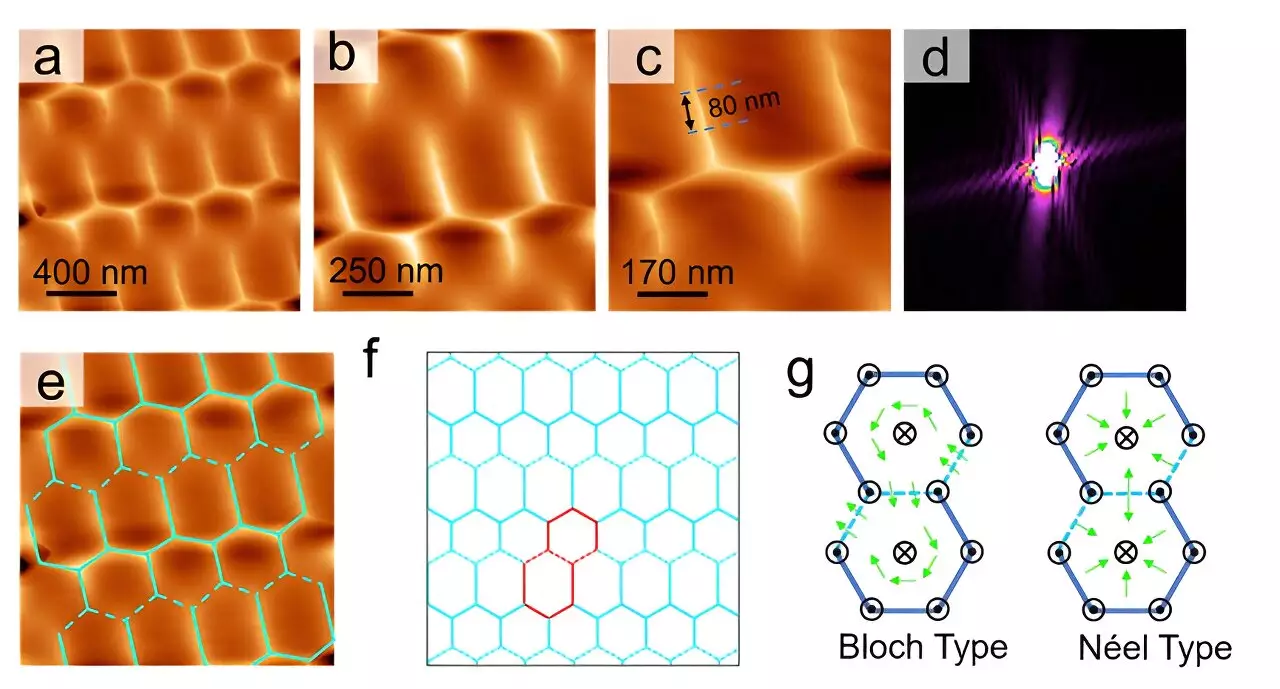Kagome lattices, a distinctive arrangement of atoms, have become a focal point in condensed matter physics due to their unusual electronic properties and the potential for novel states of matter. Characterized by their hexagonal symmetry, these structures facilitate extraordinary phenomena including topological magnetism, Dirac points, and unconventional superconductivity. Understanding the intrinsic magnetic characteristics of these lattices is crucial for advancing materials science, particularly regarding high-temperature superconductors and quantum computing applications.
A recent breakthrough by a research consortium in China marks a significant advancement in the exploration of intrinsic magnetic structures within kagome lattices. Utilizing cutting-edge tools such as magnetic force microscopy (MFM) at the Steady High Magnetic Field Facility (SHMFF), alongside electron paramagnetic resonance spectroscopy and micromagnetic simulations, the team unveiled fundamental insights into the magnetic arrangements within a binary kagome system, specifically Fe3Sn2. The findings, which appeared in **Advanced Science** on August 19, reflect the capability of modern technology to address longstanding questions in the realm of condensed matter physics.
Key Discoveries and Their Implications
Led by Prof. Lu Qingyou from the Hefei Institutes of Physical Science in collaboration with Prof. Xiong Yimin from Anhui University, the research team observed a novel magnetic pattern characterized by a broken hexagonal structure. This phenomenon arises from the interplay between the hexagonal symmetry of the lattice and the underlying uniaxial magnetic anisotropy. Such competitive dynamics contribute significantly to the unique magnetic properties of the material, overturning previous hypotheses regarding its magnetic states.
Furthermore, Hall transport measurements substantiated the existence of non-trivial topological spin configurations within Fe3Sn2. The study revealed a transition in the magnetic ground state, redefining it from an anticipated spin-glass state to an in-plane ferromagnetic state that aligns with the second-order phase transition theory. This revelation alters the fundamental understanding of magnetic phase transitions in such materials and lays the groundwork for subsequent studies investigating the underlying mechanisms.
The research also utilized the Kane-Mele model to explain the emergence of a Dirac gap at low temperatures, thus providing a refined framework for interpreting these magnetic structures. Previous theories suggesting the formation of skyrmions under low-temperature conditions were dismissed, prompting a reevaluation of our understanding of these complex systems. The development of a new magnetic phase diagram for Fe3Sn2 further elucidates the intricate balance of forces at play within the kagome lattice.
Broader Impact on Future Technologies
The implications of these findings are profound, paving the way for advancements in both quantum computing and high-temperature superconductivity. The insights gleaned from the study not only enhance our understanding of topological magnetic structures but also invite further investigation into their practical applications. As research delves deeper into the properties of kagome lattices, the potential for groundbreaking technologies that leverage these unique characteristics becomes increasingly tangible.
This groundbreaking research underscores the intricate relationship between material structure and magnetic behavior, highlighting the importance of advanced experimental techniques in the pursuit of scientific knowledge. The journey into the heart of kagome lattices marks a pivotal point in materials science, opening new avenues for exploration and innovation in the quest for next-generation technologies.

